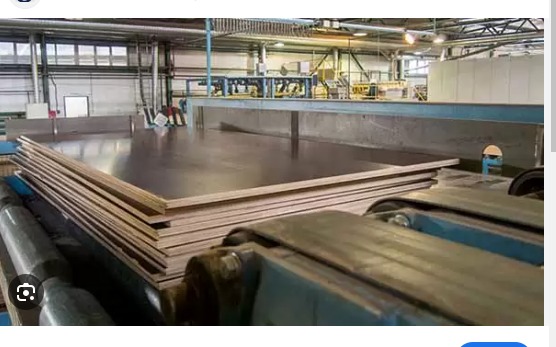Here's a brief overview of MS Plates: What is MS Plate? MS Plate stands for Mild Steel Plate, a type of steel plate made from low-carbon steel, also known as mild steel. It is a versatile and widely used material in various industries. Key Features: 1. Low Carbon Content: MS Plates contain 0.05-0.25% carbon, making them less brittle and more ductile. 2. Strength: MS Plates exhibit moderate tensile strength (up to 60, 000 psi) and yield strength (up to 30, 000 psi). 3. Weldability: MS Plates are easily weldable using various techniques, including shielded metal arc welding (SMAW), gas metal arc welding (GMAW), and gas tungsten arc welding (GTAW). 4. Corrosion Resistance: MS Plates have a moderate level of corrosion resistance, but may require coating or treatment for harsh environments. Applications: 1. Construction: MS Plates are used in building structures, bridges, and high-rise buildings. 2. Industrial Equipment: They are used in manufacturing machinery, engines, and gears. 3. Shipbuilding: MS Plates are used in shipbuilding due to their strength, durability, and weldability. 4. Automotive: They are used in automotive parts, such as chassis, body frames, and engine mounts. Common Grades: 1. ASTM A36: A widely used grade for general structural purposes. 2. ASTM A283: A grade used for storage tanks, boilers, and pressure vessels. 3. ASTM A516: A grade used for high-pressure vessels and boilers. Thickness Range: MS Plates are available in various thicknesses, ranging from 1.6 mm to 100 mm (1/16 inch to 4 inches). This brief summary should give you a good overview of MS Plates. If you have any specific questions or need further information, feel free to ask!
Chat with us on WhatsApp
×
This is your website preview.
Currently it only shows your basic business info. Start adding relevant business details such as description, images and products or services to gain your customers attention by using Boost 360 android app / iOS App / web portal.
https://www.sambhavpipesfittings.com/latest-update/here-s-a-brief-overview-of-ms-plates-what-is-ms/95
Here's a brief overview of MS Plates: What is MS ...

2024-08-20T11:56:11
Here's a brief overview of MS Plates: What is MS Plate? MS Plate stands for Mild Steel Plate, a type of steel plate made from low-carbon steel, also known as mild steel. It is a versatile and widely used material in various industries. Key Features: 1. Low Carbon Content: MS Plates contain 0.05-0.25% carbon, making them less brittle and more ductile. 2. Strength: MS Plates exhibit moderate tensile strength (up to 60, 000 psi) and yield strength (up to 30, 000 psi). 3. Weldability: MS Plates are easily weldable using various techniques, including shielded metal arc welding (SMAW), gas metal arc welding (GMAW), and gas tungsten arc welding (GTAW). 4. Corrosion Resistance: MS Plates have a moderate level of corrosion resistance, but may require coating or treatment for harsh environments. Applications: 1. Construction: MS Plates are used in building structures, bridges, and high-rise buildings. 2. Industrial Equipment: They are used in manufacturing machinery, engines, and gears. 3. Shipbuilding: MS Plates are used in shipbuilding due to their strength, durability, and weldability. 4. Automotive: They are used in automotive parts, such as chassis, body frames, and engine mounts. Common Grades: 1. ASTM A36: A widely used grade for general structural purposes. 2. ASTM A283: A grade used for storage tanks, boilers, and pressure vessels. 3. ASTM A516: A grade used for high-pressure vessels and boilers. Thickness Range: MS Plates are available in various thicknesses, ranging from 1.6 mm to 100 mm (1/16 inch to 4 inches). This brief summary should give you a good overview of MS Plates. If you have any specific questions or need further information, feel free to ask!
2024-08-20T11:56:11
Keywords
- 100 mm
- 1.6 mm
- 000 psi
- 4 inches
- ASTM A36
- MS Plate
- ASTM A516
- ASTM A283
- 2. Strength
- body frames
- Key Features
- good overview
- brief summary
- storage tanks
- Common Grades
- engine mounts
- brief overview
- moderate level
- Thickness Range
- automotive parts
- pressure vessels
- low-carbon steel
- Mild Steel Plate
- 0.05-0.25% carbon
- specific questions
- harsh environments
- various techniques
- various industries
- Low Carbon Content
- various thicknesses
- high-rise buildings
- building structures
- Industrial Equipment
- Corrosion Resistance
- gas metal arc welding
- manufacturing machinery
- gas tungsten arc welding
- moderate tensile strength
- shielded metal arc welding
- general structural purposes

Submit Your Enquiry